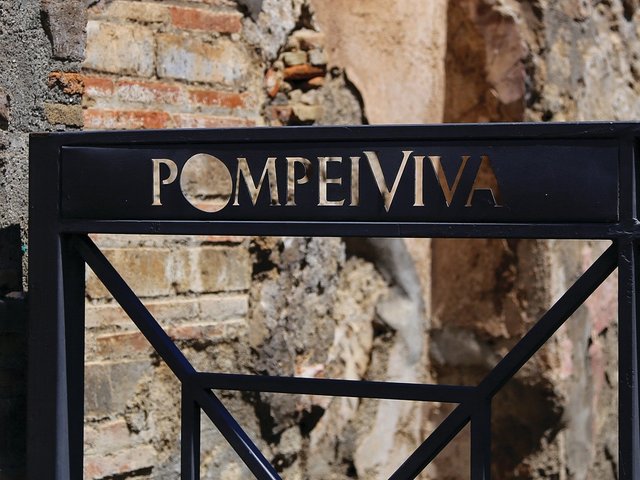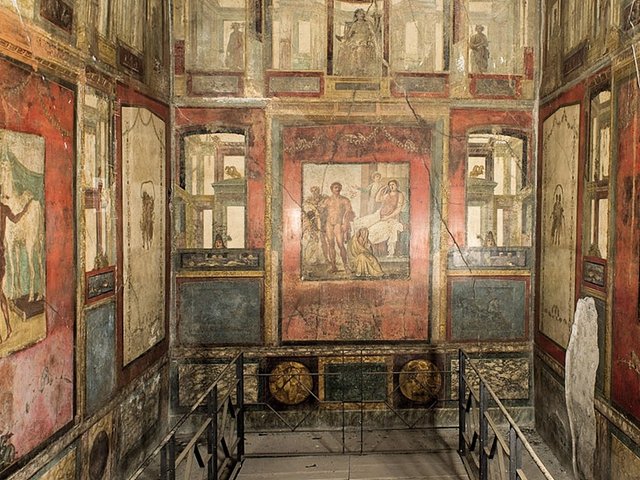Time is running out for the latest campaign to save Pompeii. The €105m project to “preserve, maintain and improve” the ancient Roman site was launched by the European Commission in March 2012 and given a deadline of 31 December 2015. If the €78m allocated by the European Regional Development Fund to the so-called Great Pompeii Project (Italy has given an additional €27m) is not spent by the end of this year, it could be withdrawn.
The Great Pompeii Project was hailed as a major boost for the vast archaeological site which suffered a series of structural collapses after heavy rain in 2010. But with only seven months to go until the project deadline, the race to spend the emergency funds is still crippled by bureaucratic delays and chronic understaffing.
Failure to follow the law
Italy passed a law in August 2013 to “accelerate the conservation” of Pompeii, which stipulated that a director-general should be appointed to oversee the Great Pompeii Project within 60 days and that “an appropriate support structure” should also be set up in the same time period. It took four months, however, for Giovanni Nistri, the former head of the art theft unit run by the Carabinieri (Italy’s military police), to be hired for the top role. Fabrizio Magani, the regional director for heritage in the Abruzzo region, was named as his deputy. But in April 2014, Magani was removed from the Pompeii project because of the demands of managing the reconstruction of the earthquake-stricken Abruzzo capital, L’Aquila. His position remains vacant.
Nistri also lacks the planned support staff of 20, plus five technical experts, which he was promised under the terms of the project. Speaking to our sister newspaper Il Giornale dell’Arte, Nistri said the experts in “law, economics, architecture, urban planning and infrastructure”, whose appointment was stipulated by the law, were not hired despite the posts being advertised numerous times by the Ministry of Culture, for reasons that remain unclear.
The shortage of civil servants has delayed the already cumbersome tendering process required to get individual restoration and maintenance projects at Pompeii under way. With a project team of 13, rather than the 20 required, Nistri’s office cannot award contracts. So, the management of the emergency budget has fallen instead to the archaeological superintendency for Pompeii, which is already responsible for routine maintenance at the site. “At this point I think the completion of the [support] structure is an impossible goal,” Nistri says.
What happens now
The risk is that the European Union will withdraw its promised €78m funding. In July 2014, the then European commissioner for regional policy Johannes Hahn, who launched the Great Pompeii Project, signed an “action plan” with the Italian government to set targets for progress every four months. He warned that any funds unspent by the end of 2015 would be lost.
Few completed sites
According to the latest figures provided by Nistri’s staff, works costing an estimated €118m have been put to tender, with €99m awarded in contracts. But of the 47 scheduled projects, only four have been completed (restoration of the Casa del Criptoportico, the Casa delle Pareti Rosse, the Casa di D. Octavius Quartio and the Casa della Fontana Piccola). Nistri’s spokesman says a further 23 are on track to be completed by 31 December. However the total expenditure to date currently stands at only €9m.
“It is not just an issue of spending €105m,” Nistri says. “All the works are supposed to be finished, inspected and documented, and included in the accounts by 31 December. We are trying to assess the restoration work which is currently under way, so that even if a project is incomplete it will be possible to calculate the value of what has been done so far.”
The Great Pompeii Project is being closely scrutinised by Unesco, which signed a co-operation agreement with the Italian government in 2011 to protect the World Heritage site. Unesco and the International Council on Monuments and Sites sent monitoring missions to Pompeii in January 2013 and November 2014. The organisations acknowledge that progress has been made. Its 2014 report, which is to be reviewed at the latest session of the World Heritage Committee in Bonn in June, notes that “substantial amounts of conservation work are being carried out on site”, mainly as part of the Great Pompeii Project. “There is no longer any question of placing the property on the World Heritage in Danger list,” the report states, a possibility that was raised by the previous mission.
The experts warn, however, that “the excellent progress being made is the result of ad hoc arrangements and special funding”. Furthermore, due to the “scale of the task” and the delays caused by precautions taken to eliminate corruption and Mafia involvement in contracts awarded for restoration jobs, the archaeological authorities “strongly risk” missing the 2015 deadline. The report recommends that the project be extended “at least until the end of 2016”. In the long term “adequate resources, human and financial” must be guaranteed to prevent “the underlying causes of decay and collapse”, the report states.
Unclear future
So far, it is uncertain whether such recommendations will become reality. The Pompeii press office remains tight-lipped, saying the decision to extend the Great Pompeii Project is in the hands of the Italian government and the European Union. Jakub Adamowicz, the European Commission’s spokesman for regional policy told The Art Newspaper that the original 31 December deadline “cannot be extended”. “Contracts tendered and awarded but whose works are incomplete will have to be finished with national resources,” he said. He added that they could be finished under new European funding for culture projects.
“The emergency remains,” Nistri warns. And he adds that due to the vast size of Pompeii and the ongoing challenge of conserving it, “when the Great Pompeii Project will be finished, with all the contracts tendered and scheduled works completed, we will finally have arrived at square one”.



